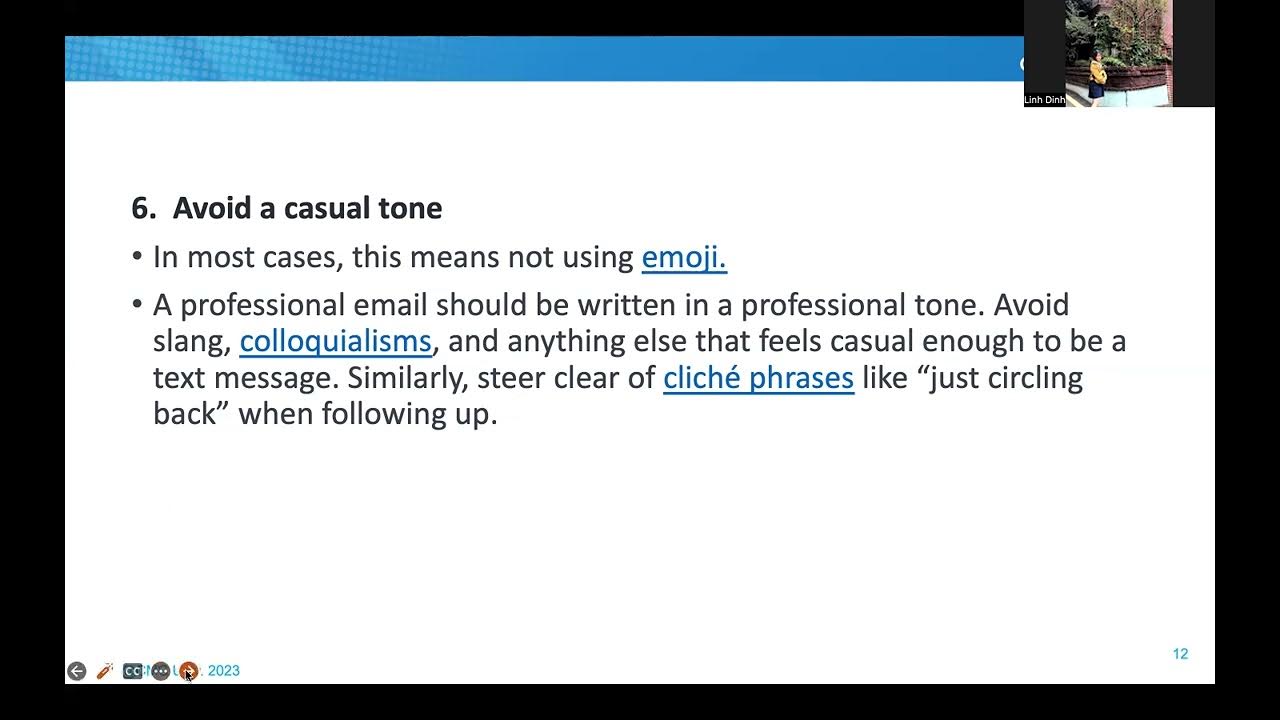Using Transition Signals || GRADE 8 || MELC-based VIDEO LESSON | QUARTER 1 | MODULE 4
Summary
TLDRThis educational video lesson focuses on the importance of transition signals in English writing. It explains that these linking words and phrases enhance coherence, making it easier for readers to follow ideas across sentences and paragraphs. The video provides examples of different transition signals, such as additive, adversitive, causal, and sequential, and demonstrates their use in improving the flow of writing. It also offers helpful tips on using transition words effectively to avoid confusion and enhance the reader's understanding.
Takeaways
- 😀 Transition signals are linking words or phrases that enhance coherence in writing by connecting ideas and indicating relationships between sentences and paragraphs.
- 📚 The primary purpose of transition signals is to guide the reader through the text, making it easier to understand the writer's ideas by showing order, sequence, contrast, and other relationships.
- 🔗 They serve various functions such as indicating a new idea, providing an example, presenting a contrasting view, or signaling a summary or conclusion.
- 📈 Effective use of transition signals improves the flow of information, making writing smoother and helping to carry thoughts from one sentence or paragraph to another.
- 📝 Transition signals are typically placed at the start of sentences but can also appear in the middle or end, often separated by commas for clarity.
- 📑 They are not necessary in every sentence but strategic use can clarify the logical relationships between ideas in writing.
- 📚 The script provides examples of how transition words can transform a paragraph, making it more cohesive and easier to follow.
- 📋 There are several types of transition words, including those that compare or contrast, indicate chronology, show cause or effect, illustrate with examples, add information, clarify, or summarize.
- 📘 In academic writing, transitions are crucial for connecting sentences, paragraphs, and sections, ensuring a logical flow and a clear presentation of ideas.
- 💡 Helpful tips for using transition words include understanding their meanings, avoiding overuse, and selecting words that fit the writing style and context.
Q & A
What is the main topic of the video lesson?
-The main topic of the video lesson is about transition signals in English writing.
What are transition signals and why are they important?
-Transition signals are linking words or phrases that connect ideas and add cohesion to writing. They are important because they help the reader understand the relationships between sentences and paragraphs, making the text easier to follow.
How do transition signals improve the flow of information in a text?
-Transition signals create powerful links between sentences and paragraphs, making the writing smoother and helping to carry over thoughts from one sentence or idea to another.
Can you give an example of how transition signals are used to show a relationship between two ideas?
-An example given in the script is 'Susan wanted cake but she also wanted ice cream.' The words 'but' and 'also' show the relationship between Susan's two desires.
Where are transition signals typically placed in a sentence?
-Transition signals are usually placed at the start of sentences, but they may also appear in the middle or end of sentences.
How can transition signals affect the clarity of the relationships between ideas in writing?
-Good use of transition words helps to make the relationship between ideas clear and logical, preventing confusion for the reader.
What is the purpose of using transition words in an entire paragraph?
-Transition words in a paragraph work to bring together the entire paragraph, making the flow of thoughts smooth and connecting sentences for conciseness.
Can you provide an example of how transition words can change the feel of a paragraph?
-The script provides an example where a paragraph without transition words feels 'choppy and abrupt,' while the same paragraph with transition words added flows smoothly and connects ideas effectively.
What types of transition words and phrases are mentioned in the script, and what do they help the reader to do?
-The script mentions types such as compare or contrast, chronology, cause or effect, illustration or examples, addition, clarification, present conditions or intentions, summary or conclusion, and sequence. These help the reader to build ideas, compare, define time, show consequences, add emphasis, reinforce ideas, show support, restate ideas, and show order.
How can transition words be used in writing essays and papers to connect paragraphs and sections?
-Transition words can be used within and between sentences to connect paragraphs and link whole sections of an essay. They help in creating a seamless flow from one paragraph or section to another.
What are some helpful tips provided in the script for using transition words effectively?
-The script suggests understanding the meaning of the transition words, being careful not to overuse them, and choosing appropriate transition words for the style of writing.
Outlines

このセクションは有料ユーザー限定です。 アクセスするには、アップグレードをお願いします。
今すぐアップグレードMindmap

このセクションは有料ユーザー限定です。 アクセスするには、アップグレードをお願いします。
今すぐアップグレードKeywords

このセクションは有料ユーザー限定です。 アクセスするには、アップグレードをお願いします。
今すぐアップグレードHighlights

このセクションは有料ユーザー限定です。 アクセスするには、アップグレードをお願いします。
今すぐアップグレードTranscripts

このセクションは有料ユーザー限定です。 アクセスするには、アップグレードをお願いします。
今すぐアップグレード関連動画をさらに表示

Grade 8 English Q1 Ep 8 Types of Transition Signals

Bahasa Inggris kelas 8 SMP Chapter 0 The Beginning | halaman 11-17 kurikulum merdeka

Sounds and Writing Symbols in English

Business English: Business Letter Writing

English for Change: Unit 1 Digital Literacies and My Identities ~ Materi Bahasa Inggris kelas XI SMA

(LEVEL 6-EPS 2): WRITING SKILLS: Formal email
5.0 / 5 (0 votes)
